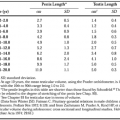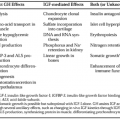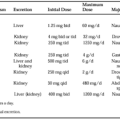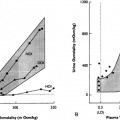AGE AND SEXUAL MATURATION
Part of “CHAPTER 10 – PINEAL GLAND“
Age substantially influences the pattern of melatonin production (Fig. 10-4). Whereas the day–night periodicity in plasma melatonin levels probably is not present at birth, by the end of the first year of life children exhibit a robust rhythm.14 The highest nighttime levels of melatonin occur in children 1 to 5 years of age. Several reports document a significant attenuation of the nocturnal rise in plasma melatonin levels between 5 and 15 years of age (Fig. 10-5).15 This decrease is of particular interest because of its possible relationship to pubertal development. In animals, the activated pineal gland, or exogenous melatonin administration, can retard sexual maturation.16 Hence, the gradual decrease in nocturnal plasma melatonin levels as humans mature sexually may permit the establishment of adult neuroendocrinegonadal relationships.17
Stay updated, free articles. Join our Telegram channel

Full access? Get Clinical Tree








